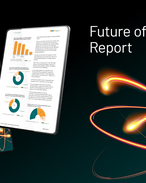The Wellington-headquartered company told the NZX this morning that the deepest of three Eocene-aged Kapuni test zones had been hydraulically fractured last week, with a successful deep fracture stimulation being achieved.
During the latter part of the operation, the frac sand backed up inside production tubing for about 300m above the test zone and this needed to be removed, along with coil tubing equipment installed, before production testing could start at the end of the month.
Despite this inhibition, the well had been flowing and lifting drilling fluid to surface at a stable rate of several hundred barrels per day. About 1000 barrels remained to be lifted before the test zone could be fully cleaned.
Austral chief executive Dave Bennett said that during the latter part of this operation gas had come to surface in increasing amounts and a flare had been sustained.
“Despite some operational frustrations, we are satisfied the first frac has been successful, that indicative flow potential is good, and that gas is coming from reservoir to surface," he told EnergyReview.net.
Bennett said the middle zone was currently being perforated for testing. A number of other substantial secondary sandstones - indicated from electric logs to be hydrocarbon-bearing - could also be brought into production, as well as the primary three which were all established producer sandstone units in offsetting wells and fields.
Though no stabilised flow results had yet been obtained and no reserves assigned for Cardiff-2A, within PEP 38738, Sproule International estimated “probabilistic” reserves in place exceeding 215 bcf (50%) and 341 bcf (10%), plus 12.8 million (50%) and 21.5 million barrels (10%) of condensate.
Given reasonable commercial success in any or all of these zones, a 3D seismic survey was planned to be acquired in late 2005-early 2006 covering the mapped extent of both the Cardiff and Cheal fields within the permit to select further drilling targets on both fields.
“The Cardiff-2 site is designed to allow a further two wells to be deviated to suitable targets and could form the nucleus of future field processing facilities,” Bennett told ERN.
"Pipeline links to regional gas distribution systems, as well as to NGC’s nearby high-capacity pipeline network are also possible. Cardiff is a work in progress, we know we have gas in the reservoir and there’s lots of scope for change."
The company’s March quarterly report, released to the NZX yesterday, said the Cheal-A site would be upgraded to permanent production status and, following completion of planned production testing at Cheal-A4 and Cheal-A3X, both wells would be placed in long-term production, supplemented by Cheal-1. Cheal-A4 had produced over 29,000 barrels of oil to mid-May, with a similar testing program now planned for Cheal-A3X.
Sproule International estimated Proven Developed plus Undeveloped Reserves in Cheal at 1.511 million barrels, and Probable Reserves at 1.425 million barrels.
Power generation would be commissioned, utilising solution gas associated with oil production, to provide on-site power needs and to export electricity into the local power grid. Two more wells, Cheal-A5 and Cheal-A6, were planned from the same wellsite later in 2005 and the Cheal-B site would be prepared about 1km north of Cheal-A to develop the northern area of that field.
The PEP 38738 shallow partners are: operator Austral (36.5%), Cheal Petroleum (30.5%) and International Resource Management (33%). The PEP 38738 (deep) partners are: operator Austral (25.1%), Genesis Energy (40%), Cheal Petroleum (15.1%) and IRM (19.8%)























